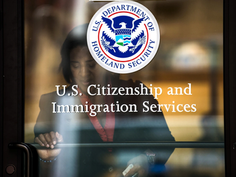From Margin to Majority: Women’s Rise in EU Cultural Employment
- Khoshnaw Rahmani

- Aug 2
- 4 min read
Khoshnaw Rahmani, Jadetimes Staff
K. Rahmani is a Jadetimes news reporter covering culture.

1. Historic Gender Parity in EU Culture
In July 2025, Eurostat reported that the gender gap in cultural employment across the European Union has narrowed to just 0.8 percentage points—the lowest on record since data became available in 2011. Women now hold 49.6 percent of cultural-sector jobs, compared with 50.4 percent for men, and in 16 EU Member States women have actually overtaken men in cultural employment. This watershed moment signals a profound shift in who creates, curates, and leads Europe’s museums, archives, media, performing arts, and design industries.
2. Defining Cultural Employment
Eurostat’s broad definition of cultural employment captures three dimensions:
Culture-related occupations in cultural sectors, for instance journalists working in publishing or ballet dancers in dance companies.
Non-cultural occupations in cultural sectors, such as accountants in film studios or human-resources staff in museums.
Culture-related occupations outside cultural sectors, for example graphic designers employed by tech firms.
By encompassing both creative and support roles, this methodology provides the most comprehensive view of Europe’s creative economy.
3. A Decade of Progress: 2011–2024
Since Eurostat began tracking cultural employment by sex in 2011, women have steadily increased their share of the workforce:
Year | Men (%) | Women (%) | Gender Gap (pp) |
2011 | 54.1 | 45.9 | 8.2 |
2015 | 53.2 | 46.8 | 6.4 |
2019 | 51.6 | 48.4 | 3.2 |
2022 | 50.8 | 49.2 | 1.6 |
2024 | 50.4 | 49.6 | 0.8 |
Early gains were driven by growth in women-dominated sub-sectors—publishing, performing arts, and visual design—while male-dominated fields like printing and reproduction continued a long-term decline. The slight setback in 2020 mirrored pandemic-related job losses, but a strong recovery in 2021–22 restored momentum2.
4. Key Drivers of Female Empowerment in Culture
1. Educational Attainment • Women now outnumber men in tertiary arts, humanities, and media programs across the EU, creating a larger pipeline of qualified candidates for creative roles.
2. Sectoral Expansion • Rapid growth in digital media, UX/UI design, and cultural tourism—sub-sectors with high female participation—has outpaced traditional industries like printing and audiovisual production, where women remain underrepresented.
3. Policy Interventions • EU directives on gender equality (e.g., SDG 5) and national action plans in France, Lithuania, and Portugal have funded mentorship schemes, leadership training, and flexible-work initiatives specifically for women in culture.
4. Organizational Reform • Major institutions—national museums, public broadcasters, and film funding bodies—have adopted gender-parity targets for boards and creative commissions, accelerating women’s advancement into decision-making roles.
5. Beyond Numbers: Employment Quality and Leadership
While near-parity in headcount is a landmark, stark imbalances persist in wages, contract security, and management positions:
· Gender Pay Gap: In 2022, 16.1 percent of women in cultural employment were low-wage earners (earning less than two-thirds of the national median), versus 11.2 percent of men.
· Self-Employment & Precarity: – Cultural self-employment stands at 33 percent EU-wide, higher than the average economy rate. Women make up nearly half of these freelance roles but face greater income volatility and fewer social protections.
· Leadership Roles: Women occupy only 43.9 percent of managerial posts in cultural sectors, compared with 35.2 percent in the broader economy, indicating progress yet ongoing glass-ceiling effects.
6. A Global Benchmark: The EU vs. Other Regions
Comprehensive statistics on cultural-sector gender balance are scarce outside Europe. However, UNESCO’s 2018 Global Report on Cultural Times observed that most regions still exhibit double-digit gender gaps in creative employment, with North America averaging a 4–6 percentage-point gap and Asia-Pacific closer to 7–10 points. By contrast, the EU’s sub-1 point gap makes it a world leader in gender parity for cultural work.
7. Country Spotlights: From Latvia to Italy
Country | Women’s Share (%) | Male Advantage (pp) |
Latvia | 62.7 | –12.7 |
Estonia | 60.7 | –10.7 |
Luxembourg | 57.0 | –7.0 |
Spain | 45.4 | +9.5 |
Italy | 44.5 | +9.5 |
Greece | 49.9 | –0.1 |
Romania | 50.1 | –0.1 |
Latvia and Estonia lead with women holding over six-in-ten cultural jobs, while Spain and Italy still show male-majority workforces, highlighting uneven progress within the EU.
8. Timeline: Milestones in Women’s Cultural Employment
· 2011: Eurostat begins disaggregating cultural-sector data by sex.
· 2013–14: Rapid increase in women’s participation driven by arts and heritage restoration boom.
· 2018: UNESCO’s Global Report flags persistent global gender gaps outside Europe.
· 2020: COVID-19 pandemic causes temporary decline in women’s cultural employment.
· 2021: EU lifts gap from 3.2 points to 1.6 through digital-media recovery.
· 2024: Gender gap closes to 0.8 points; women outnumber men in 16 Member States.
· 2025: First sub-1 point gender gap recorded—women solidly a majority in EU culture.
9. Challenges and Next Frontiers
Wage Equity: Closing the pay gap requires targeted collective-bargaining agreements and transparency mandates.
Leadership Parity: Governments and funders must enforce quotas for boards, commissions, and festival juries.
Contract Security: Expanding social protections for freelance and part-time culture workers will safeguard women from income volatility.
Intersectional Inclusion: Policies must address the compounded disadvantages facing women of colour, migrant women, and those with disabilities in cultural fields.
10. From Margin to Majority—and Beyond
Europe’s cultural sector has achieved a landmark transformation: women have moved from the margins to a near-equal—and in many cases majority—presence. Yet full equality extends beyond headcounts. True inclusion demands fair pay, stable contracts, leadership opportunities, and intersectional policies that uplift all women in culture. The EU’s pioneering progress offers a global blueprint, but the journey from majority to equity is only just beginning.











































Comments